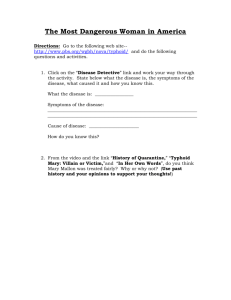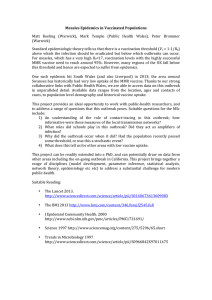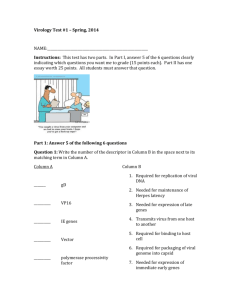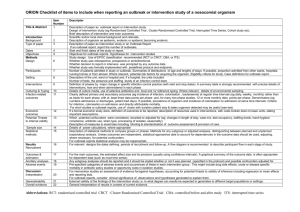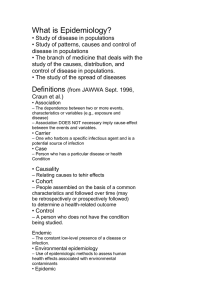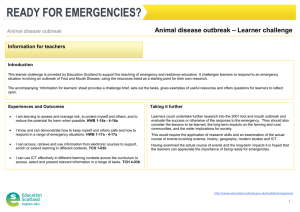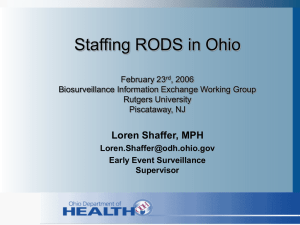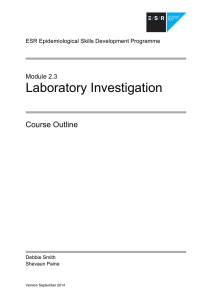Typhoid in Dushanbe, 1997
advertisement
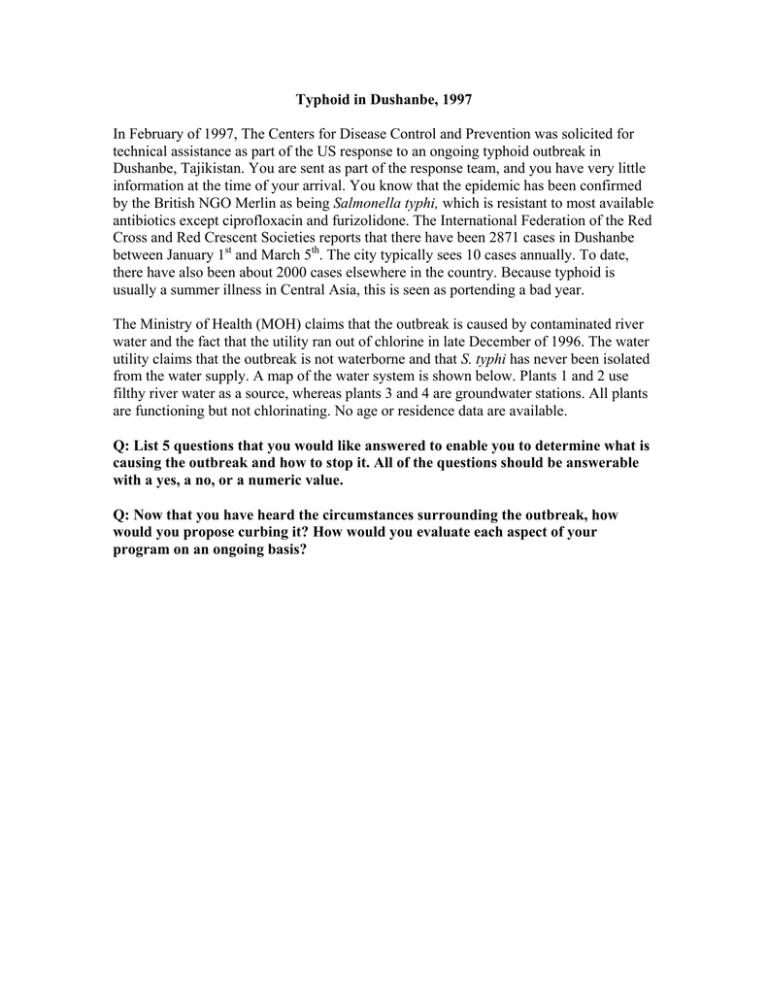
Typhoid in Dushanbe, 1997 In February of 1997, The Centers for Disease Control and Prevention was solicited for technical assistance as part of the US response to an ongoing typhoid outbreak in Dushanbe, Tajikistan. You are sent as part of the response team, and you have very little information at the time of your arrival. You know that the epidemic has been confirmed by the British NGO Merlin as being Salmonella typhi, which is resistant to most available antibiotics except ciprofloxacin and furizolidone. The International Federation of the Red Cross and Red Crescent Societies reports that there have been 2871 cases in Dushanbe between January 1st and March 5th. The city typically sees 10 cases annually. To date, there have also been about 2000 cases elsewhere in the country. Because typhoid is usually a summer illness in Central Asia, this is seen as portending a bad year. The Ministry of Health (MOH) claims that the outbreak is caused by contaminated river water and the fact that the utility ran out of chlorine in late December of 1996. The water utility claims that the outbreak is not waterborne and that S. typhi has never been isolated from the water supply. A map of the water system is shown below. Plants 1 and 2 use filthy river water as a source, whereas plants 3 and 4 are groundwater stations. All plants are functioning but not chlorinating. No age or residence data are available. Q: List 5 questions that you would like answered to enable you to determine what is causing the outbreak and how to stop it. All of the questions should be answerable with a yes, a no, or a numeric value. Q: Now that you have heard the circumstances surrounding the outbreak, how would you propose curbing it? How would you evaluate each aspect of your program on an ongoing basis?


